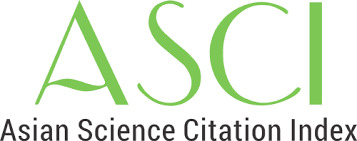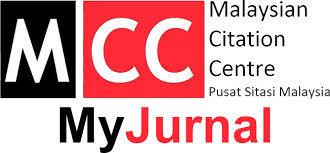TRIPLE - RELATIONAL LATENT LEXICOLOGY-PHONOLOGY-SEMANTIC “MMRLLEXICOLPHONOSEMC” ANALYSIS MODEL FOR EXTRACTING QURA’NIC CONCEPT
Keywords:
Multiple Triple-Relational, Latent, Lexicology-Phonology-Semantic, Model Extracting, Qur’anicAbstract
Abstract: Al Quran is a divine text which represents the purest and most authentic form of the classical Arabic language. In order to understand the meaning of each verse, a deep knowledge of Arabic linguistic is essential. Therefore, our scholars have made their efforts by engaging themselves in the works of explaining al Quran’s words, interpreting its meanings into Arabic and other languages. Currently, more people are interested in knowing the content of al-Quran, especially for non-Muslim, after 9/11 tragedy. Thus, a flexible model that can represent Qur’anic concept is required for people to understand the content of the Quran. In this research, propose a Multi-Relational Latent Lexicology– phonology -Semantic Analysis Model (MMRLLEXICOLPHONOSEMC) based on a combination of Arabic Phonology Semantic and six multiple relations between words, which are synonym, antonym, hypernym, hyponym, homonym and meronym, to precisely extract Qur’anic concept. The existing literatures focus only on very limited relationships between words which could not extract the in-depth concept of Qur’anic without considering the importance Arabic phonology Semantic. Therefore, the objectives of this research are: (1) to analyses and categorize Quranic words according to Arabic phonology Semantic patterns, (2) to propose a new model for extracting Quranic concept using MMRLLEXICOLPHONOSEMC, (3) to investigate phonology semantic relationships between Qur’anic words, and (4) to validate the proposed model with Arabic linguistic, and Qur’anic experts. This research will be conducted qualitatively through content analysis approach a new innovative technological technique. It is expected that the model will come out with a precise analysis for extracting Qur’anic concept. This will be very significant in enhancing the overall Quran’s understanding among the society in Malaysia and Muslim’s world for sustainable society.
References
A. E. Mousa, R. Schlüter & H. Ney. 2012. Investigations on the use of morpheme level features in Language Models for Arabic LVCSR. IEEE International Conference on Acoustics, Speech and Signal Processing (ICASSP), pp. 5021-5024.
Al-Hamad, G. Q. 2015. The importance of phonetics in the study of intonation. Second Edition. (I. o. Library, Ed.) Riyadh: Interpretation Center for Quranic Studies.
Ali, A. 2009. Contemporary Linguistics for Students in Malaysian Universities. First Edition. Malaysia: The Malaysian Scientific Publication Council.
Al-Saran, M. 1962. Linguistics an Introduction to the Arabic Reader. Egypt: House of Knowledge.
Anis, I. 1975. Linguistic Sounds. Fifth Edition. Egypt: Anglo-Egyptian Library.
Azman Ta'a, Abidin, S.Z., Abdullah, M.S., Ali, B. B. M., & Ahmad, M. 2013. In: 4th International Conference on Computing and Informatics (ICOCI 2013), 28 -30 August 2013, Kuching, Sarawak, Malaysia, hal. 383-389.
Bahnasawy, H. E. 2005. Phonetic studies of Arab scholars and the modern phonemic lesson. Cairo: Zahraa El Sharq.
Bashar, K. M. 1971. General Linguistics. Part Two: Voices. Second Edition. Egypt: House of Knowledge.
Bishr, K. M. 2000. Phonology. Cairo: strange house.
Chang, K., & Meek, W.Y.C. 2013. Multi-Relational Latent Semantic Analysis.
Cosma, G. 2008. An Approach to source-code plagiarism detection investigation using latent semantic analysis. IEEE Transaction on Computers. Retrieved from http://eprints.dcs.warwick.ac.uk/401/1/cs-440.pdf
Desouki, S., & G. 2011. An Application Oriented Arabic Phonological Analyzer. Damascus University Journal 27(1): 7-19.
Hikmat Ullah Khan, Muhammad Saqlain, S., Shoaib, M, & Sher, M. 2013. Ontology Based Semantic Search in Holy Quran. International Journal of Future Computer and Communication 2(6): 570-575.
Ibn Jinni, O. 1956. Al Khasa'is . Egypt: Dar Al-Kutub Al.
Inaam Al-Haq Ghazi & Nasser Mahmoud. 2017. "The sound syllable and its importance in Arabic speech". Arabic Section Magazine. In Arabic Section Magazine Twenty-Fourth issue. Lahore, Pakistan: Punjab University.
Maha al-Yahya & Hend al-Khalifa. t.th. An Ontological Model for Representing Semantic Lexicons: An Application on Time Nouns in The Holy Quran. Arabian Journal for Science and Engineering 35(2): 21-35.
Mariobay, Translation: Ahmed Mukhtar Omar. 1973. Foundations of Linguistics. Libya: Tripoli University Press.
Omar, A.M. 2004. Study of linguistic sound. Cairo: The world of books.
Ozcan, R., & Aslandogan, Y. A. 2004. Concept Based Information Access Using Ontologies and Latent Semantic Analysis. 1-16.
Rahman, A.A. 2003-2007. Linguistics Studies. Bandar Nilai Baru, Negeri Sembilan: Publishing Section USIM.
Rahman, A.A. 2007-2017. A'liyat Tahlil al-Nas al-Qur’ani al-Lughawiyy: Dirasah Lughawiyyah Dalaliyyah (Formula Book). Bandar Baru Nilai, Negeri Sembilan: Publishing Section USIM.
Rahman, A.A. 2018-2019. Modern Linguistics Studies . Bandar Baru Nilai, Negeri Sembilan: Publishing Section USIM.
Shaheen, A.S. 1980. The phonetic approach to the Arabic structure. Beirut: Al-Resalah Foundation.
Steinberger, J. & Jezek, K. 2004. Using Latent Semantic Analysis in Text Summarization. Proceedings of ISIM 2004, pp. 93-100.
Zhao, L. & Callan, J. 2010. Term necessity prediction. Proceedings of the 19th ACM International Conference on Information and Knowledge Management - CIKM, pp. 259.













